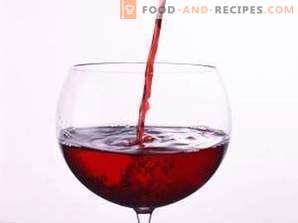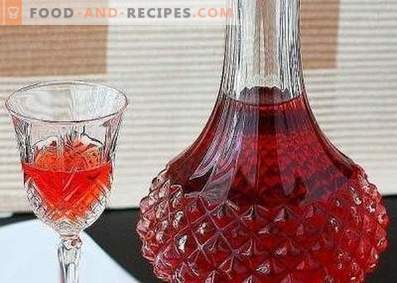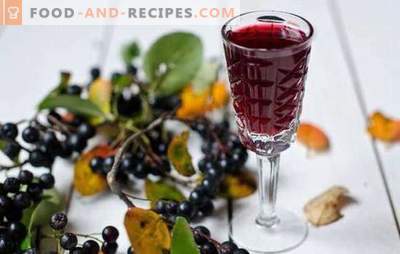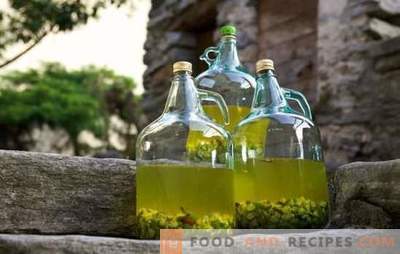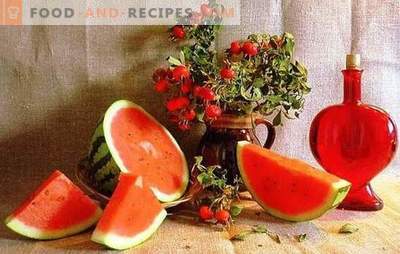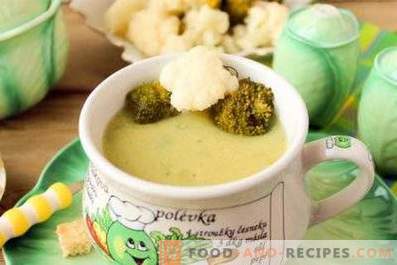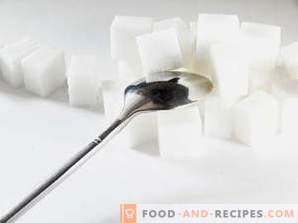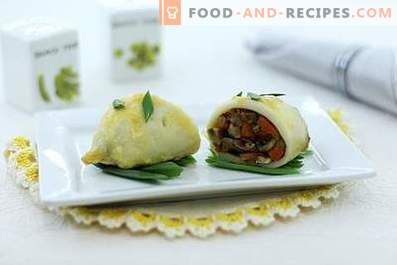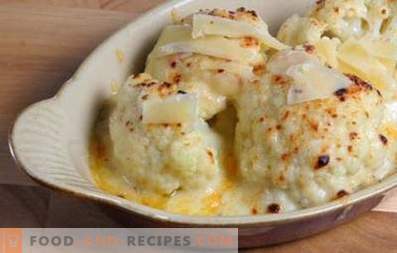
Homemade dry wine is made from a variety of fruits and berries.
Compliance with the rules and the sequence of actions will be the guarantor of a natural and high-quality drink.
Dry wine at home: general cooking principles
Wine is a product of sugar processing into yeast.
Dry wine is different from other categories of wines with a minimum sugar content. In the drink, which is made from fruits with high sugar content, no additional sugar is required.
The most popular material for winemaking is grapes. Its berries contain a large amount of juice and natural yeast on the surface.
It can also be used to prepare the turnip, apple, cherry, dogrose, gooseberry, currant and other berries.
Wine is made from fully ripened fruit. Unripe berries contribute to the souring of the drink - over-ripe ones will give a bitter taste.
Gathering wine raw materials in dry weather (before collecting for several days should not be raining). This is an important point, as the rain washes vegetable yeast from the berries. You need to have time to harvest and before the first frost, to save the yeast from death.
Berries or fruits should be bruised immediately, but not washed. Remove twigs, leaves, rotten and dried fruit. Selected raw materials to overtake on juice.
Dry wine at home from grapes
Grapes, torn to make wine, can not be stored for more than one and a half days, otherwise it will begin to sour. Berries do not wash. There are two options for making wine from grape juice. Both are equally acceptable.
1. Stretch berries with your hands, trying not to miss a single thing. Do all the work in gloves, as the juice is very staining. Grapes can not be pressed by the press or use household appliances to get juice - you can damage the bones, which will give bitterness to the wine. It is not recommended to use metal grinders to prevent oxidation. If necessary, it is better to use wooden tolkushka The resulting mass is placed in a container and cover with a thick layer of gauze. In the first days, the juice will begin to sour, and the pulp will be at the top of the cap. At this stage, you need to stir the pulp several times a day to prevent souring. The next step is to separate the juice from the pulp. Small portions of it are passed through cheesecloth or cloth, and poured into prepared dishes. There is still enough juice in the pulp. Therefore, it is not thrown away, but poured with warm water, again squeezed and filtered. The diluted concentrate is poured to the bulk. 2. The second option is easier. The juice is squeezed out immediately, and placed in a fermentation vessel without berries (pulp). This method is used to produce white wine.
The ideal fermentation tank is a glass bottle. Dishes should be clean and dry.
Size is determined by the number of grapes. With small volumes, you can use glass jars for 5-10 liters.
It should be noted that the tank should be filled with wort only 3/4. The remaining quarter will take foam and carbon dioxide.
On the bottle of juice be sure to fix the water seal. He will not give the guilt to sour, and through it will be removed carbon dioxide produced during fermentation.
A medical glove can be used as a water seal. They put it on the neck and are wrapped with tape for reliability. To exit the gas with a needle, a hole is punctured on one of the fingers. While the wine is wandering glove remains inflated.
A good odor trap is obtained from a medical device for intravenous infusion (drip). One end of the pipeline is placed in a bottle, the other is passed through a cork or cap and dipped in a jar of water. Place the connection with the cork / lid plastered with clay or putty. Suitable for sealing and flour, diluted in water. Bubbles in the bank will inform that the process is proceeding normally.
Homemade wine ferments one and a half to three months.
The temperature most suitable for fermentation is 16-25 ° C. Wine is not recommended to subject the temperature drops. When it decreases, the yeast stops working, and when it rises, it dies.
If a few days later the wine stopped fermenting (the glove was blown off, bubbles did not stand out), then the yeast could not cope with the work or died. To resume fermentation, throw a handful of raisins into the bottle (do not wash).
After all the sugar has been processed and the fermentation is completed accordingly, the yeast falls loose sediment to the bottom of the bottle. Wine can not be kept on the draft for more than two weeks - it will spoil its taste.
Before you drain the wine, put the container on the chair and allow the liquid to settle. Then a narrow rubber hose is immersed in the bottle. Its end should not reach the draft. Through the other end of the hose, the mouth draws air in to start the movement of the fluid. Over the entire period of maturation, the wine is removed from the sediment several times. This in turn nourishes it with oxygen.
Not all raw materials contain the necessary amount of yeast. For proper fermentation, yeast yeast is added. It is easy to cook at home. For this fit grapes, raspberries, raisins. A glass of unwashed berries is poured with 1.5 cups of warm water, half a glass of sugar is added and allowed to stand for souring for several days in a warm room. Added a glass of leaven with a calculation for 10 liters of juice.
Dry wine at home from apples
Apples are excellent raw materials for the production of dry wine at home. To do this, it is best to take the winter or autumn varieties of fruit. Due to the increased acidity, it requires the addition of sugar, but not more than a glass per liter of juice. Apples also do not recommend washing. The core is extracted from the fruit - this will help avoid bitterness. It is better to use freshly picked apples, because after hardening, they lose their juiciness and become loose. Fruits are passed through a juicer and the resulting juice or mashed potatoes are placed in a fermentation tank for several days.
When the liquid is fermented, it is necessary to remove the apple pulp formed at the top and install a water seal that will prevent souring. Further fermentation lasts up to one and a half months. After that, the wine is filtered, poured into containers and placed in storage in a dark place.
Dry thorny wine at home
Wine from the turn can be prepared with or without the addition of yeast.
Without the addition of yeast, the wine of thorns is prepared according to the following recipe:
• 1 piece of turn;
• 1 part water;
• a glass of sugar for 1 liter of wort.
The turnip berries are kneaded, poured with warm water, sugar is added and placed in a warm room for fermentation. Three days later, the juice is separated from the pulp and a water trap is installed on the container. At the stage of quiet fermentation, the wine is poured several times from the sediment.
Yeast shaker:
• 10 kg of turn;
• 2 kg of granulated sugar;
• 4 liters of water;
• yeast.
According to this recipe, sugar syrup is prepared, and the turn is boiled in water until the moment when the peel breaks on the berries. Everything cools to room temperature and is mixed in a fermentation tank with the addition of yeast sourdough. Further technology is no different from making other fruit dry wines at home.
Dry wine at home gooseberry
The taste of gooseberry drink is not inferior to grape wine. Prepare it from ripe berries. In order not to lose the flavor, picked berries do not store more than a day.
For cooking you will need:
• 1 part gooseberry;
• a glass of sugar per 1 liter of juice;
• 1 part water.
Crush berries and put in a container. Water is added to increase juice yield. Syrup is made from sugar and water. He is allowed to cool to room temperature and poured berries. The neck of the container must be tied with gauze. It is important to observe the temperature at 16-20 ° C and periodically mix the wort so that it does not sour. When the fermentation process begins, filter the juice and pour it into another container with a water seal. Pulp of water and squeeze. The resulting juice, mixed with the first spin.
Instead of water, you can add juice of sour apples or currants.
If fermentation has started inactively, yeast sourdough is added to the wort.
A vessel with wine is put on further fermentation in a dark place. After about three weeks, the wine is removed from the sediment and poured into containers for storage and further maturation, which will last up to six months.
Cherry dry wine at home
Unlike grapes, which contain a balanced amount of sugar and yeast, there is very little sugar in cherry berries. Therefore, the preparation of a wine drink will not do without adding it to increase the strength. Sometimes you have to add water to reduce acidity.
To prepare the ingredients are taken in the following ratio:
• 1 part cherry;
• 1 part water;
• a glass of sugar for 1 liter of wort.
Before you get the juice from the cherry, it is recommended to remove the bones, giving the wine bitterness. The subsequent stages are the same as in the preparation of wine from grapes.
If there is no special device for determining the level of sugar - hydrometer, then they rely only on their own taste. But as mentioned above, to get a dry wine per liter is added no more than a glass of sugar.
Dry black / white currant wine at home
There is little juice and sugar in currants, but a lot of yeast. Therefore, for the preparation of even dry wine, the addition of sugar and water is necessary.
Composition:
• 1 part of currant;
• 1.5 parts water;
• A glass of sugar per liter of juice.
Currant knead thoroughly and pour cooked sugar syrup and leave for several days to ferment. Then separated from the pulp and add, if necessary, a portion of the syrup. Further quiet fermentation takes place under the water seal. Wine is removed from the sediment several times.
The best option would be a mixture of currants with gooseberries or currants and cherries. For the preparation of white wine need white currant. The drink is prepared according to the principle described above.
Dry Rose Hip Wine at Home
To prepare the wine from the wild rose is used both fresh and dry berries of the plant.
Recipe:
• 1 part rose hips;
• 3 parts water;
• a glass of sugar per kilogram of wild rose;
• a glass of raspberry or raisin sourdough.
Berry knead, pour boiled sugar syrup. Raspberries or raisins are added for active fermentation. After that filter and put under the water seal until the end of fermentation.
Sea buckthorn dry wine at home
Sea buckthorn juice is not easy to get. To do this, the berries are ground in a blender or crushed with a press and poured with water. Then squeeze through gauze. This procedure is carried out several times.
Components:
• 5 kg of sea buckthorn;
• 2 liters of water;
• pound of sugar;
• glass of leaven.
If the yeast from the surface of the berries will not cope, sugar and yeast sourdough are added to the juice. On the surface will form a yellow foam, which will need to be removed several times a day. And the capacity with wine is wiggled several times a day, as if disturbing.
After fermentation (about a month), the wine is filtered with gauze, poured into a container and left in a dark place for 3 months until fully ripe.
Dry wine at home: Tricks and tips
- During the fermentation process, the wine is removed from the sediment several times. Despite this, the drink will not be completely transparent - you need clarification. For these purposes, you can use such home remedies as egg white or gelatin. These products react with the suspension (yeast residues and tannins), after which they are deposited on the bottom with flakes.
- One protein is enough to brighten up to 50 liters of wine. It should be thoroughly whipped and poured into the bottle, and after two weeks to drain the wine from the sediment.
- Gelatin brightens red wine well. The powder (20 gr.) Should be allowed to brew in a glass of water and pour into the wine. The flakes will precipitate in two weeks.
- Important! Lightening wine (pasting) is carried out only after the wine is completely fermented.
- In order for a wine to retain its properties, it needs to provide suitable storage conditions. The ideal option would be to keep it in a cellar with a temperature not exceeding 10 ° C.
- Dry wine is not recommended to be stored at home for more than one year.

